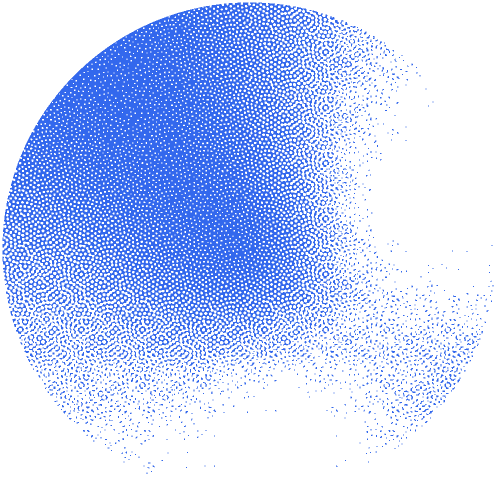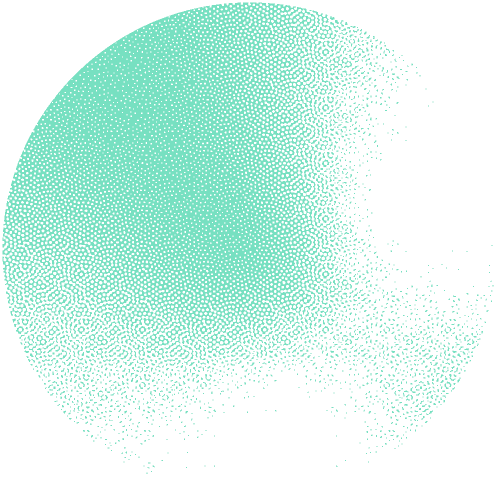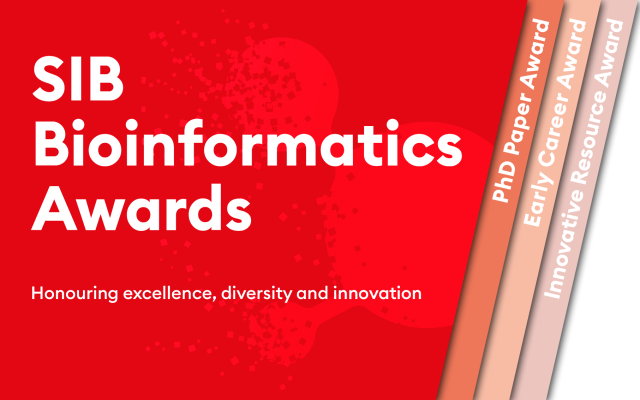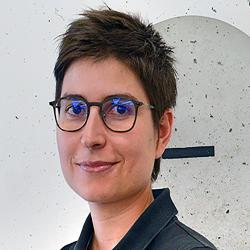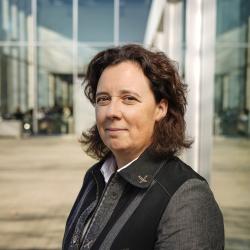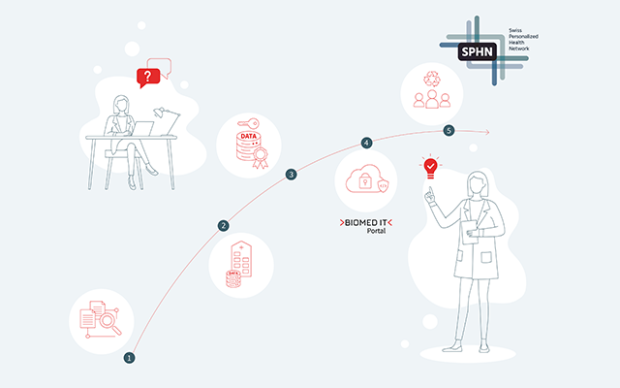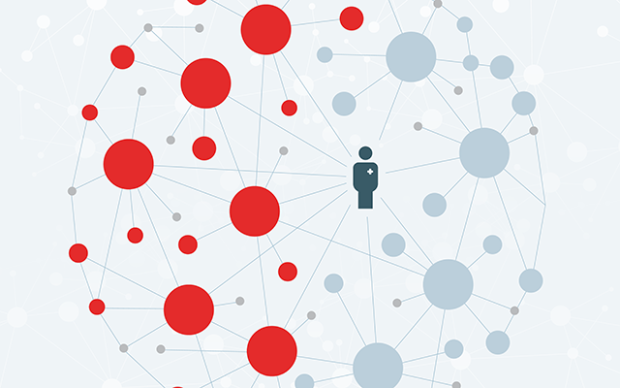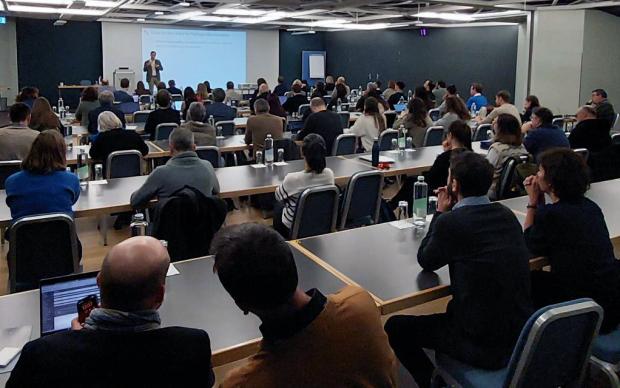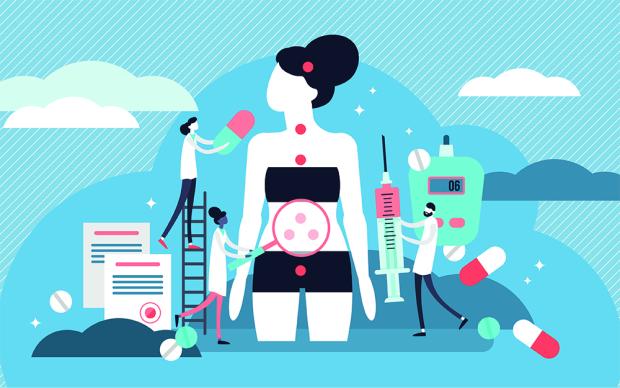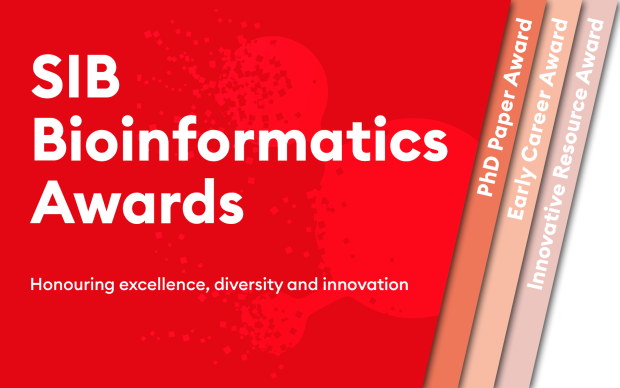Aitana Lebrand – Laureate of the 2010 SIB Early Career Bioinformatician Award
Aitana Lebrand was a Graduate Student in the team of SIB Group Leader Sven Bergmann at the University of Lausanne when she received the award in 2010 for her project on the “Precision and Scaling in Developmental Patterning” in the fruit fly Drosophila melanogaster.
Today, Aitana works as a Clinical Bioinformatics Project Manager in the Clinical Bioinformatics Group at SIB, notably to harmonize next-generating sequencing (NGS) efforts between University Hospitals in Switzerland. To learn more about Aitana’s work, have a look at the Clinical Bioinformatics webpage.
About the SIB Bioinformatics Awards and our interview series “Meet the past SIB Awards Laureates”
Started in 2008 as an initiative to distinguish young bioinformaticians in Switzerland, the SIB Bioinformatics Awards have gone a long way since: from a single national award to three different prizes today, honouring 1) international early career bioinformaticians (SIB Early Career Bioinformatician Award), 2) excellency within the Swiss PhD community (SIB Best Swiss Bioinformatics Graduate Paper Award) and 3) innovative bioinformatics resources (SIB Bioinformatics Resource Innovation Award). Throughout the years, 21 awards have been presented, with nine laureates recognized for their outstanding early career, ten Graduate students for their excellent publication and two bioinformatics resources for their innovative aspect.
In 2019, the SIB Bioinformatics Awards will be presented for the 10th time, providing a great occasion to reach out to past laureates and ask them where they are now in their career: this interview is part of a series inviting you to meet past SIB Bioinformatics Awards laureates.
At which point of your career were you when you received the SIB Award? How did it feel? What was the key interest of your research at this time point?
I received the award at the end of my PhD. I was quite surprised, because our paper, which had just been published in the journal of Molecular Systems Biology, was challenged a lot. We explained how the dynamic formation of morphogen gradients during Drosophila embryonic development could contribute to enhanced precision and scaling of downstream target gene domains. This concept was in contrast with many of the current assumptions and therefore triggered a lot of discussion and a paper rebuttal. In this context, receiving the award felt comforting and very rewarding.
What are your current research interests?
In the Clinical Bioinformatics Group, we notably collaborate with Swiss University Hospitals, research groups and SIB teams to standardize the use of next-generation sequencing data for clinical diagnostics. This includes for example setting up benchmark trials on the clinical use of NGS for bacterial typing and virus identification, or the development of platforms for harmonized data exchange and analysis between hospitals. We also implement training courses on clinical bioinformatics specifically aimed at hospital staff.
If you are no longer doing research, what is your current activity? What made you change your career path?
My work is very much connected to the realm of clinical research and diagnostics. It entails a very strong project management component. Compared to my previous research, I very much enjoy the applied side of it, the teamwork, and interacting on a regular basis with clinicians and scientists from clinical labs.
In your personal opinion, what is the single most fascinating discovery made possible by bioinformatics?
Bioinformatics enabled the Human Genome Project and thereby a better understanding of the structure and function of our genome.
What do you like to do in your free time?
I like to play music, mainly the bass guitar, and I recently started to learn how to play the saxophone too
Any words for the future generation of bioinformaticians?
It’s important to take time explaining to your non-bioinformatician collaborators what you’re doing, how you’re doing it, and why you’re doing it - even the maths! But also, remember to take time to ask your collaborators what they’re doing, how they’re doing it, and why... You could even consider spending a few days in their lab: understanding each other is key for fruitful, rewarding and successful collaborations!
